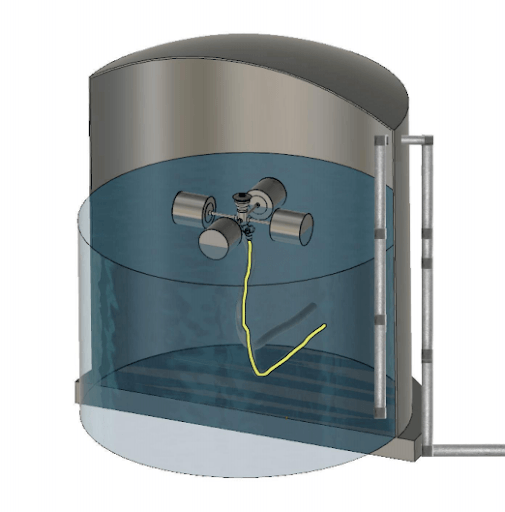Methane Emission Reduction
Did you know we can reduce methane emissions in oil storage tanks and convert that to green electricity and make your pipeline a power plant.
https://www.houstonchronicle.com/business/article/Oil-patch-ingenuity-can-help-fight-climate-change-15438090.php
https://www.epa.gov/energy/greenhouse-gas-equivalencies-calculator?unit=MCF&amount=146000
Internal and External Floating Roof Tanks Using the XTT Tool
When dealing with tank emissions this is the only tool on the market that deals internally inside the tank where the emissions are occurring. The XTT tool will be attached under the floating roof in the pontoon area where there is vapor space when the roof is launched by liquids. This is where the XTT tool will take gas emissions out of the tank, not letting the pressure and volume build enough to send vapors to a tank seal. If gases are removed, then there are no gases to leak. A pressure transmitter will control when to start and stop the pull of gases from the tank. This will all be in the ounces range of pressure. A vapor recovery compressor moves the gases. Removing gases in a controlled process and containing them, versus letting the gases escape to the atmosphere is the difference between what we can do and what is currently being practiced. The gases that can now be recovered are a commodity to sale at market price or can generate electricity using a gas turbine. Using the XTT Tool repairs tank storage issues as well as recovering a product to sell.
When XTT is in tanks the roof can land and be in compliance. The rules that do not allow for the landing of a roof are because there are no means to capture the emitted gases. The operator can take the heel of the tank every time now because the gases are being captured and there is zero emissions escaping. Placing XTT into tanks will change permitting. In most places the permit is written and based on tonnage of emissions. The emissions go away and by adding the XTT tool to all tanks, this should give the room to expand with the permits. The emissions went from tonnage to zero. This alone should change business approaches on OM&S facilities. Another great aspect of this tool is for those who deal with sour service tanks. The acidic atmosphere will generally erode the floating roof every three to four years. Pinhole leaks will develop in a roof, creating a compliance issue. When tanks are scheduled to go down, it is generally a four-month long job. While down it is common practice to look at seal repair and tank inspection. The cost will average three to four million to clean, enter and reskin the tanks roof and finish any other repairs



